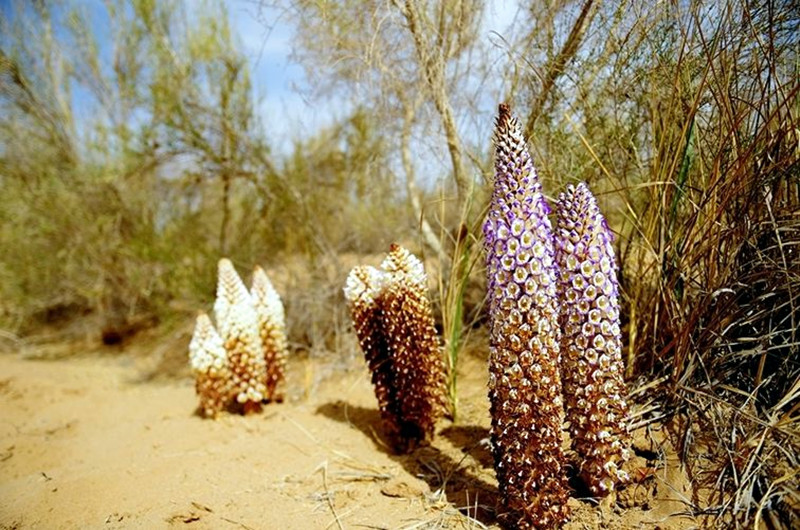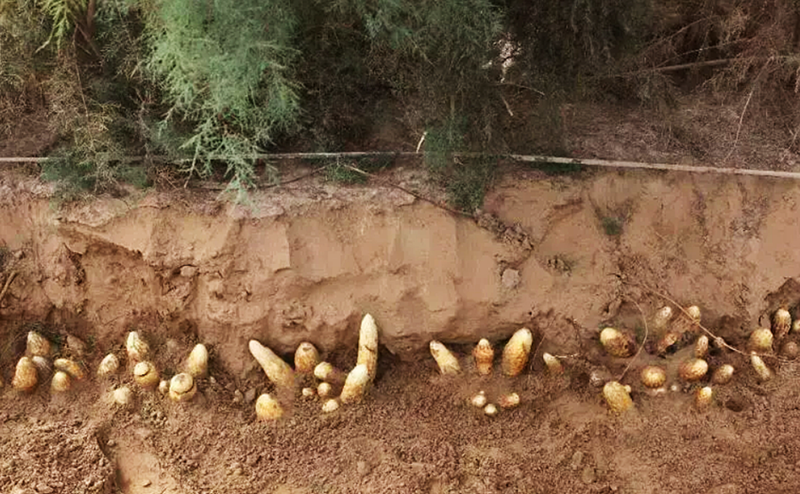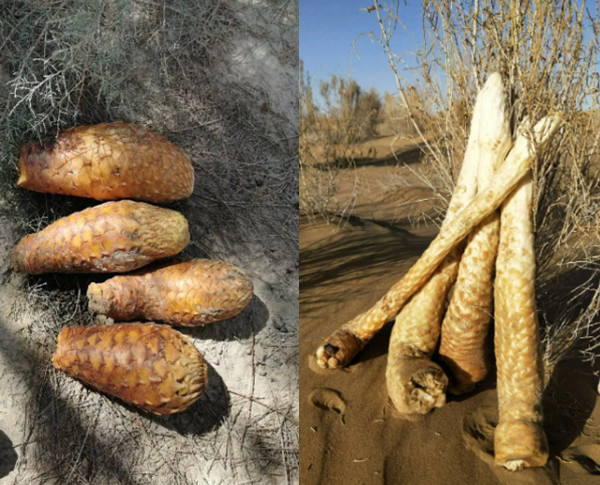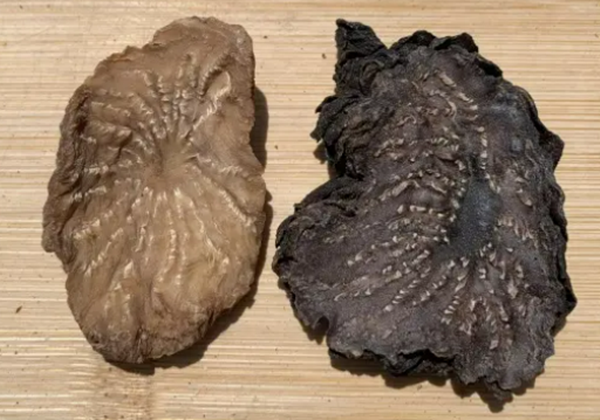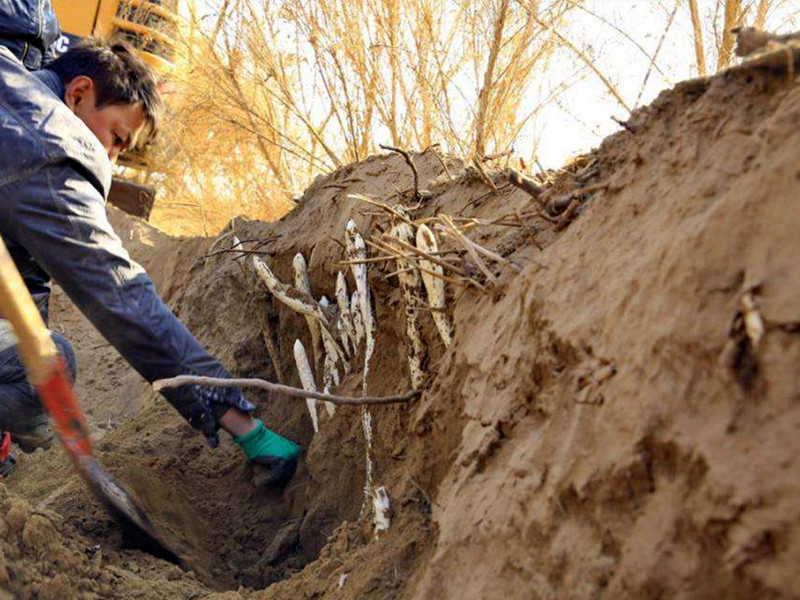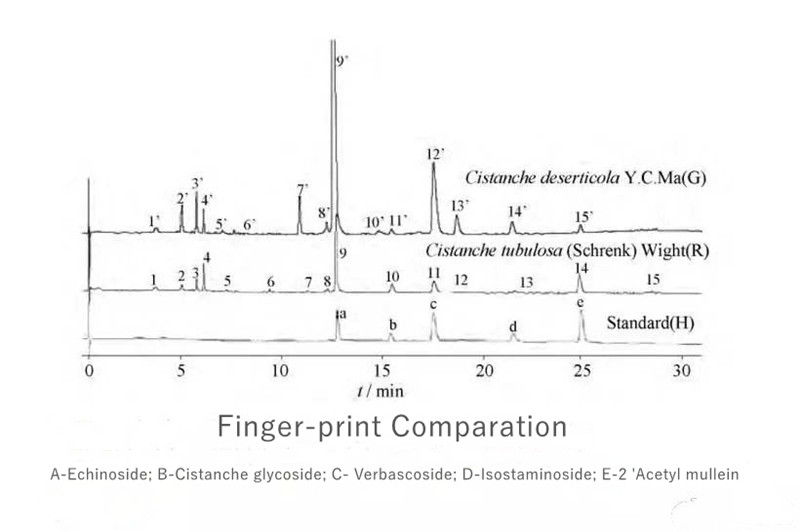There are about 22 species of cistanche in the world, mainly distributed in the desert areas of the warm and dry regions of the Northern Hemisphere, such as the Iberian Peninsula in Europe, northern Africa, Arabia Peninsula in Asia, Iran, Mongolia, northwest China and so on. According to the 2015 edition of Chinese Pharmacopoeia, the herbal medicine Cistanche is the dry fleshy stem with scaly leaves of Cistanche deserticola or tubulosa cistanche. That is, the fleshy stem with scaly leaves of cistanche when it is about to emerge from the ground or just emerge from the ground, and the inflorescence formed is cut off in time and dried in the sun or partially buried in the sand for medicinal use. At present, the most productive cistanche species in China is cistanche tubulosa or Cistanche deserticola, so do you know how to distinguish them and which is better?
Appearance
Cistanche deserticola is mainly parasitic on the root of Haloxylon ammodendron of chenopodium. It is mostly wild, small in size and soft in texture. C. tubulosa is more parasitic under red willow trees, which is thicker and harder than cistanche deserticola. Cistanche tubulosa can be distinguished according to plant shape, length, diameter, scale leaf, mass, sectional vascular bundle, inflorescence and other information. The distribution of transect vascular bundles is important information about how to distinguish them.
Left: Cistanche tubulosa Right: Cistanche deserticola
Left: Cross section of Cistanche tubulosa; Right: Cross section of Cistanche deserticola
| Species | Cistanche deserticola | Cistanche tubulosa |
| Shape | Mostly flat cylindrical | Flat oval, spindle or taro – like irregular shape |
| Surface color | Dark brown or brownish black | Dark red, yellowish brown |
| Texture | hard surface and ductile | hard without toughness |
| vegetation transcent | Dark brown or brown-black, mostly yellowish-brown punctate vascular bundles arranged into curved rings or radiates | Light grayish brown, some edge is black brown glue-like, many black brown punctate vascular bundle irregular dispersion |
| vascular bundle of tuber | Middle bead vascular bundles arranged in wavy curved rings | Irregularly scattered,some bundles with voids, occasional phloem fibers |
| Pith of scale | Star shape, large pith cells, pith rays obviously | Without pith |
| Scale vascular bundles | Mostly 5 bundles, without lateral branches | Mostly 6-13,with branching |
| Powder | Very few composite grain, composed of 2 particles, no fiber | Complex grain more, 2-3 (-5) granular composite, occasionally see fiber |
Taste
Cistanche deserticola is hardy to cold and has high sugar content. The hot water after brewing is black and yellow after repeated brewing. Its moistening bowel laxative effect is better because of its oily product.
The water of cistanche tubulosa has a bitter taste because of its lower sugar content and high content of echinoside and verbascoside, which is used in pharmaceutical and healthcare products, especially male healthcare products.
Content of active ingredient
At present, the chemical components of Cistanche deserticola have been isolated and identified mainly including phenyl ethanol glycosides, iridoid glycosides, lignans, amino acids, sugar alcohols and so on. The main components in cistanche tubulosa extract include phenylethanol glycosides, iridoids and their glycosides, lignans and their glycosides, sugars and volatile components. In general, they contain similar types of compounds.
The content of echinacoside in Cistanche deserticola is about 0.3g per 100g, and its market price is slightly higher than that of tubulosa deserticola due to its rare production. The general content of echinoside and calycoside in fresh Tubulosa deserticola is about 1.5g-4G in 100g, and the longer the growth time, the more the content.
Compared with their fingerprints, the content of phenylethanol glycosides in Cistanche deserticola was significantly lower than that in C. tubulosa, and the phenylethanol glycosides in C. tubulosa deserticola were significantly higher than iridoid glycosides, and the phenylethanol glycosides in C. tubulosa deserticola were mainly echinoside and mulinoside. Therefore, the effective components of C. tubulosa were much higher than Cistanche deserticola. According to Chinese Pharmacopoeae, “the total content of echinoside (C35H46O20) and calycoside (C29H36O15) in Cistanche deserticola should not be less than 0.30%, and the total content of echinacoside (C35H46O20) and calycoside (C29H36O15) in tubulosa deserticola should not be less than 1.5%”.
Applications
Cistanche deserticola has a good effect of moistening intestines and defecating, especially suitable for constipation patients. Cistanche tubulosa has various functions such as tonifying kidneys, protecting the liver, delaying aging, improving immunity, regulating endocrine, resisting oxidation and resisting fatigue, etc due to its higher active ingredients, it has been widely used in medicine, food, health food and other industries.
Looking for Cistanche extracts? Contact us today for your health projects.
- Dandelion Extract: What It Is, Benefits, Uses and Side Effect - April 23, 2024
- Is Berberine Extract Help For Weight Loss? - April 11, 2024
- Why Is Pysllium Husk Powder A Popular Meal Replacement Ingredient? - April 3, 2024

